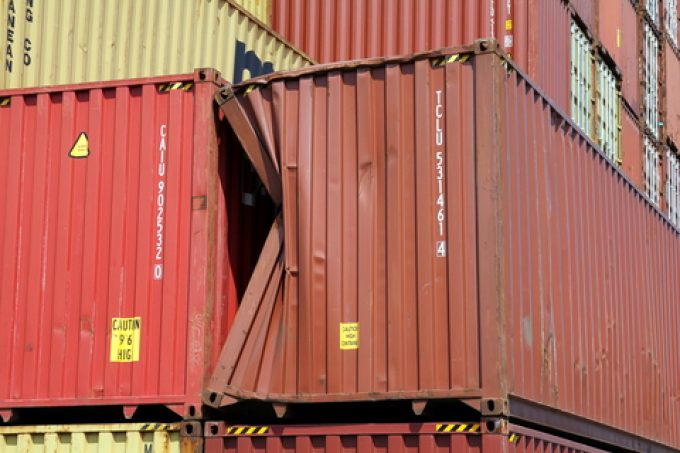Golden State fast becoming a 'goldmine' for organised cargo crime
Cargo crime “is really going through the roof everywhere, globally”, according to the president and ...
CHRW: DEFENSIVEKO: GENERATIVE AI VISIONKO: AI USAGEKO: MORGAN STANLEY CONFERENCEGXO: NO SALE NO MOREGXO: CEO EXITDSV: TINY LITTLE CHANGEXOM: LEADERSHIP CHANGES FDX: DOWNGRADEZIM: BEST PERFORMER WTC: INVESTOR DAY AAPL: LEGAL RISKTSLA: UPGRADEXOM: DIVESTMENT TALKAMZN: HOT PROPERTYGM: ASSET SALEHLAG: PROTECTING PROFITS
CHRW: DEFENSIVEKO: GENERATIVE AI VISIONKO: AI USAGEKO: MORGAN STANLEY CONFERENCEGXO: NO SALE NO MOREGXO: CEO EXITDSV: TINY LITTLE CHANGEXOM: LEADERSHIP CHANGES FDX: DOWNGRADEZIM: BEST PERFORMER WTC: INVESTOR DAY AAPL: LEGAL RISKTSLA: UPGRADEXOM: DIVESTMENT TALKAMZN: HOT PROPERTYGM: ASSET SALEHLAG: PROTECTING PROFITS

A list of 15 of the most dangerous cargo types commonly carried in containers has been released by the Cargo Integrity Group, a collection of industry associations focused on supply chain safety.
Describing the list as ‘Cargoes of Concern’, it said they were “usually transported safely when regulations and guidelines are followed”, but “can become hazardous if handled incorrectly”.
If containers carrying them are mis-declared, or have incomplete or incorrect information about their contents, they are more likely to be involved in incidents.
The group has divided the cargo into three types, according to the dangers they pose: – reactive hazards; spill or leak risks; and improper packing consequences.
Cargo prone to reactive hazards is the most commonly seen in supply chains and can include charcoal and carbon, calcium hypochlorite, lithium-ion batteries, cotton and wool, fishmeal and krill and seed cake.
“The combined experience of our organisations has been harnessed to identify these categories and result in pinpointing some commodities where the risks are perhaps less obvious,” said Peregrine Storrs-Fox, risk management director at leading supply china insurer TT Club.
“While the potential dangers of transporting, for example, calcium hypochlorite or lithium-ion batteries might be more widely appreciated, the combustible qualities of seed cake or the hazards associated with cocoa butter or vegetable oils will be less well-known,” he added.
Cargo which poses spill or leak risks – like hides and skins, wine, bitumen, cocoa butter, recycled engines and engine parts and vegetable and other oils, particularly when packed in flexitanks – can present a risk if not packed properly or if they are damaged. Spills or leaks from these can harm the health of people cleaning up a spill, as well as the environment.
Finally, cargo poorly or incorrectly packed or secured in a container can lead to injuries to personnel and/or damage to nearby containers, property, or other cargo.
This has often been found to be the cause of container stack collapses and other incidents at sea or on land that can cause severe accidents, such as truck rollovers and train derailments.
These cargo types include logs and timber, steel coils and marble and granite.
“Every actor in the global container supply chain is responsible for the health and safety of not only their own people, but also of those at any onward stage of the container’s journey,” said Lars Kjaer, SVP of the World Shipping Council.
The danger list is based on data from the TT Club’s claims history, as well as a report prepared by the International Cargo Handling Coordination Association (ICHCA) that was submitted to the IMO on incidents involving dangerous goods on ships or in ports,
Data was also culled from the Container Incident Notification System (CINS), the liner accident reporting system which collates information provided by its members on incidents involving dangerous cargo.
The Cargo Integrity Group, which comprises the Bureau International des Containers, Container Owners Association, FIATA, Global Shippers Forum, ICHCA, TT Club and World Shipping Council, said it hoped the list would encourage more stakeholders to use the IMO/ILO/UNECE Code of Practice for Packing of Cargo Transport Units – otherwise known as the CTU Code.
“Complying with regulations and following the advice in the CTU Code saves lives, and we appeal to everyone shipping, packing and handling commodities that fall within the categories of these Cargoes of Concern to be particularly diligent,” Mr Kjaer added.
Comment on this article